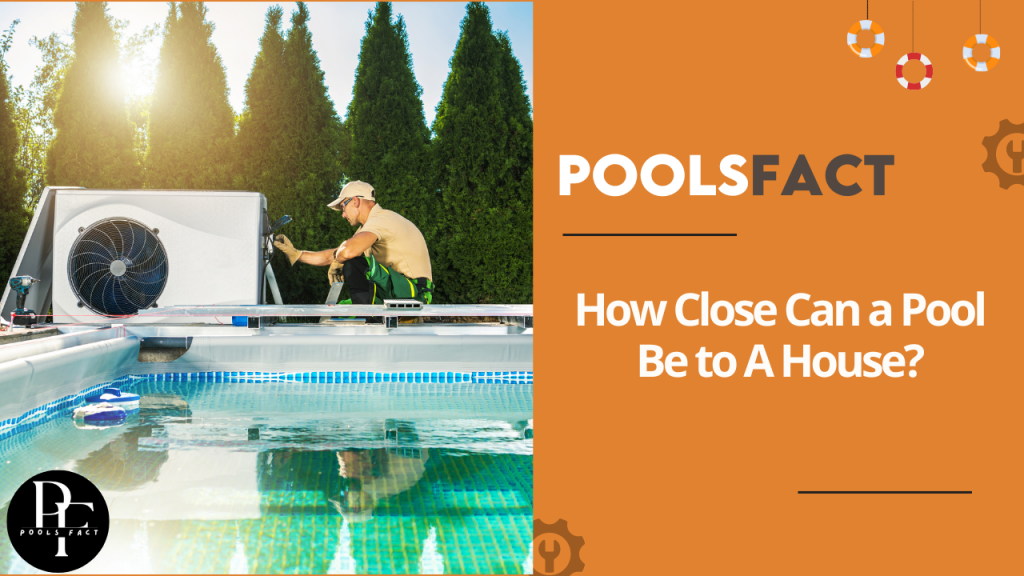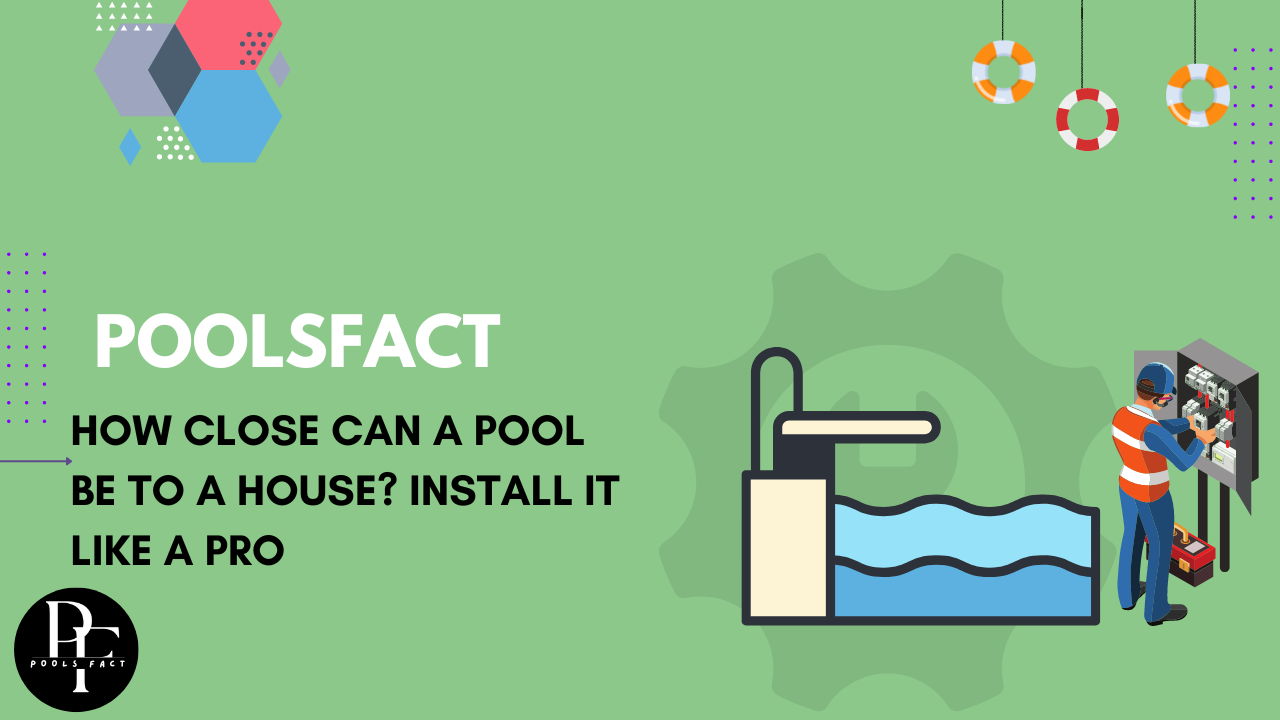Any prospective pool owner’s decision to buy a pool is undoubtedly a very exciting period in their life. Anyone can start daydreaming when they consider cooling off on a hot summer day, unwinding on an inflatable mattress, or working out in the privacy of their own backyard.
However, you must take care of all the technical parts of pool installation before fulfilling your ambitions. You must take into account the pool’s size, the landscaping requirements for your backyard, and the maximum distance an inground pool can be from the home.
Your swimming pool installation firm should be able to assist you with many of these factors, but you should also be aware of the problems that might arise and cause major headaches during swimming pool installation if only to save money by not having to hire someone to take care of them.
Some of the factors you should take into account before installing your new swimming pool are listed in this post.
How Close Can a Pool Be to A House
We know that this question, “How to Decide Where to Place a Pool”, always comes to your mind. But don’t worry, we are here to help you out.

Your pool is one of the largest features in the area, even for a modest backyard. A pool requires careful consideration and design, but determining the precise location can be challenging because there are many factors to take into account.
National Standards
According to national rules for pool sites, a swimming pool should be at least 10 feet away from a house’s external walls, regardless of whether it is an infinity pool or a lap pool. For the practical reasons already mentioned, you’ll want to make sure your pool is a reasonable distance from your house.
The biggest one is the chance that splashing or pool overflow could cause electrical issues if electrical connections or wires are too close together. If your pool is too close to sources of live power, pool leaks could be a danger.
The Situation of The Soil and Ground
It’s crucial to pick a location that can support and hold a pool since certain ground features, including a high water table, and rocky, sandy, or unstable soil, would make construction more difficult.
It will be important to prepare the ground for the amount of water your pool will contain if the conditions are not quite right for a pool. The best course of action is to have a professional pool installer verify all of these circumstances because a pool is a significant investment.
Also Read: How to Increase Suction in Pool Skimmers? Remove Unwanted Particles
Drainage and Landscaping
When it comes to a level surface and the drainage patterns on your property, you’ll also want to make sure that your yard is ideal for the installation of a swimming pool. If the situation isn’t quite ideal for a swimming pool right now, you’ll need to undertake some landscaping to get the ground ready for the amount of water your pool will store.
If the task calls for heavy machinery, you’ll also want to confirm that you can access your garden with that machinery. It’s generally not a good idea to remove a portion of your house to provide an excavator or backhoe access to your yard. You should also consider how your yard will look once the pool is in.
The majority of customers won’t be happy with a swimming pool surrounded by dirt and gravel, so you’ll benefit from giving post-installation landscape design some thought.
Space
Your options for pool placement and size are constrained if you only have a small amount of space available. Avoiding pools with rounded and asymmetrical designs is advised for smaller spaces.
Larger properties offer more alternatives, but it’s crucial to choose a pool that fits into your backyard and leaves space for other features like a pool deck, patio, lawn, etc.
Local Laws
While pool builders and contractors must abide by federal regulations on pool placement, local ordinances must also be taken into consideration. In some places, a pool and a house need to be at least 25 feet apart. These are laws that your neighborhood government upholds.
There could be further guidelines for where to put pools. For instance, San Diego County mandates that homeowners with residential pools install barriers that separate the pools from the residences. Additionally, in San Diego, pools must be at least 3 feet away from internal property borders.
Sun Exposure
It is not advisable to construct your pool near trees. They scatter leaves into the lake and cover the light.
So think about positioning your pool in a location that gets a lot of sunshine during the day.
Not only will you have more hours to enjoy the warmth, but you’ll also need to do a lot less cleanup and upkeep.
Discuss with Your Neighbors
There is nothing worse than a pool that is in the wrong place or has issues. When your neighbor is being rude while you are trying to enjoy your pool, it can be really annoying.
You should consult your neighbors about their opinions prior to deciding where to put your pool. You can inquire from them regarding any problems or worries they may have with the pool.
Before you begin construction on a pool, it is crucial to gain the cooperation of your neighbors.
Also Read: How to Block Neighbor’s Pool Pump Noise? Relax in Silence
The Price of Disregarding Requirements
It’s crucial to verify with your local municipality before starting pool building since you risk being penalized if you don’t follow local regulations. If an inspector finds that your pool is closer to your home than it should be, you risk receiving hefty fines. Additionally, the possibility of incurring additional fees for disassembling and transferring your pool in order to comply exists.
Space for Other Backyard Features
Consider any further backyard additions you may be planning when choosing the minimum distance between the house and the swimming pool. For instance, you could want to build a deck or patio next to where your pool would be, so you’ll have to move your pool to make room for those additions.
Before construction really starts, in the original planning and design process, these elements should be taken into account and discussed.
Conclusion
We trust that this article has given you a better understanding of the recommended minimum distance between the house and the swimming pool. There are numerous things to think about while making this choice, but if you’ve taken the time to properly master each one, you’ll be able to enjoy a tranquil outdoor setting that is safe, enjoyable, and comfortable. Good fortune!
Frequently Asked Questions (FAQs)
How Close to House Can Inground Pool Be?
According to national rules for pool sites, a swimming pool should be at least 10 feet away from a house’s external walls, regardless of whether it is an infinity pool or a lap pool. For the practical reasons already mentioned, you’ll want to make sure your pool is a reasonable distance from your house.
How Close to An Easement Can You Build a Pool?
A pool deck cannot be on an easement, but it can usually be close by. A minimum distance for an easement is typically not necessary, but you should always double-check with the building inspector of your municipality.
What Is the Law About a Fence Around a Pool?
California law mandates that every property with a pool have a property fence that is at least 5′ tall, measured from the side away from the pool. Additionally, there must be no RV access gates and a self-closing, self-latching pool safety gate. If driveway gates are automatic, they must open and close in less than 20 seconds.

Leave a Reply